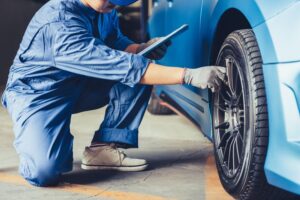Car Tires Tips
Maintenance of safe tires is an integral component of car ownership. Learn the causes and solutions to unsafe tire situations. Also discover useful maintenance advice.
Assess your driving habits to find out which tire will best meet your needs, making sure to maintain proper inflation and rotation to reduce uneven wear on each tire.
Treadwear
Tire tread depth plays an essential role in steering and traction at high speeds, and can give a good indication of its expected lifespan compared to a reference tire – with higher treadwear numbers suggesting longer lifecycle expectations for each tire.
While these ratings can be useful, it’s important to remember that they are estimates based on controlled tests and may differ depending on which manufacturer conducts them. When comparing treadwear grades between brands it is always wiser to do so within each.
Uneven tread wear can be caused by several factors, including improper inflation, wheel alignment issues and suspension problems. Common issues associated with cupping and feathering tire tread wear involve its inner or outer edges wearing faster than its center tread area.
Another effective method of gauging treadwear is using a penny to detect treadwear indicators – small slits in the center of main grooves that indicate when your tread needs replacing. Once these indicators appear, replacement should take place as soon as possible.
Pressure
Tire pressure plays an essential part in ensuring a safe, smooth driving experience. Low pressure may result in poor handling during emergency maneuvers and increased risks of tire failure as well as uneven tread wear over time. Your vehicle’s handbook provides the manufacturer’s recommended tire pressure settings, and a yellow sticker should be displayed either on the driver door jamb or tire itself to indicate them. For optimal results, use a high-quality tire pressure gauge – available at most auto parts stores or gas stations for under $15 – when checking your tire pressure. Remove each valve cap before quickly depressing the gauge’s stem for readings; for optimal results it is preferable to check tires when cold, which means not driven or parked for three hours or more prior to checking them.
Rule of thumb suggests that tire pressure fluctuates by 1 psi for every 10 degree change in temperature, as air expands when warm and contracts when cold. Furthermore, you may lose pressure over time as seals wear down over time or due to leaky valves – make sure you check them often; especially before embarking on long journeys or when your tires are carrying additional loads.
Alignment
Your tires serve as an essential traction device and must be aligned correctly in order to function safely. A vehicle that’s misaligning can cause uneven tire wear and lead to unsafe driving conditions; professional technicians can inspect for misalignments in its suspension system and make necessary adjustments so all wheels point in the same direction.
One telltale sign of an alignment issue is when your tires wear down more quickly than expected, likely as a result of being pulled in various directions and working against each other while driving – this increased stress causes faster wear-and-tear and wear out than is necessary.
Correctly aligned tires should be perpendicular to both the road and each other, providing optimal vehicle handling, reduced tire wear and better fuel efficiency. One simple way of checking whether your tires are aligned is to look out for feathered or uneven tread wear at the edges of their treads.
Wheel alignment differs from tire balancing, which involves adding small weights inside each tire in order to distribute their weight more evenly across their unit and prevent one or more from becoming lighter than others, prolonging their lifespan and lengthening their lifespan.
Storage
No matter if it’s car tires for winter storage or paddle boards for the summer storage, certain steps need to be taken in order to keep them in top condition. This is particularly relevant with tires since replacing just one can cost quite a lot. By following some simple tips you can keep your tires in great shape for years.
Before placing your tires into storage, it’s essential that they are free from chemicals and debris. A combination of soap, water, and tire brushes should help remove years worth of dirt, grime, and brake dust from each tire. Furthermore, maintaining their recommended air pressure during storage will prevent excess pressure on certain areas which could result in flat spots or irreparable damage to them.
If possible, store your tires in a cool and dry climate-controlled environment for best results. However, if this is not feasible, you can minimize damage caused by fluctuating temperatures and humidity levels by placing them in airtight plastic bags or tire covers for storage. It may also be beneficial to move them every two to three months during storage so as to ensure deflection doesn’t remain in one area for too long.


